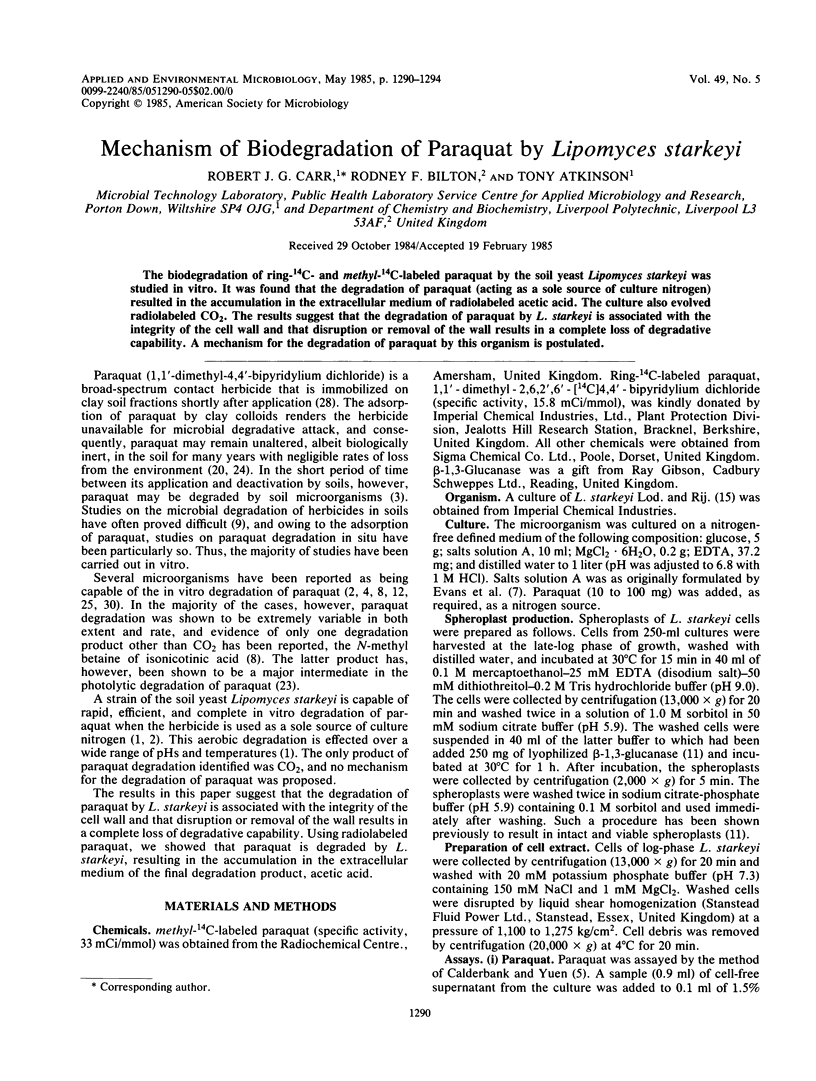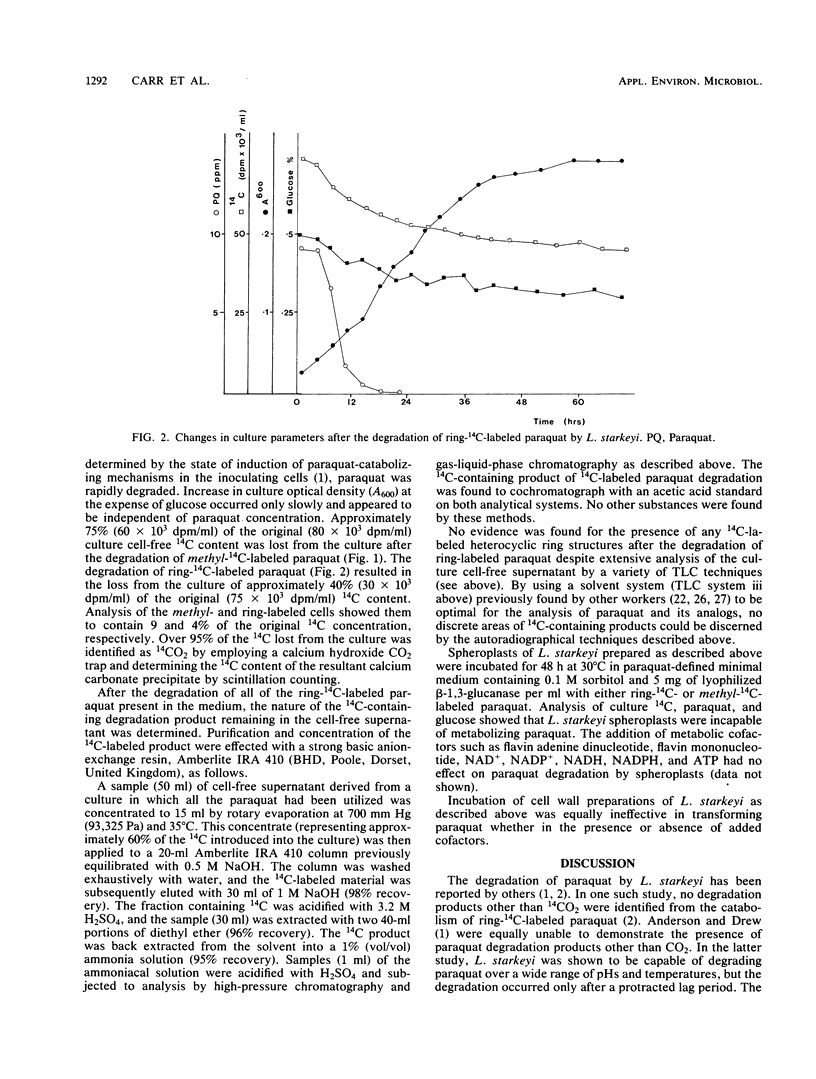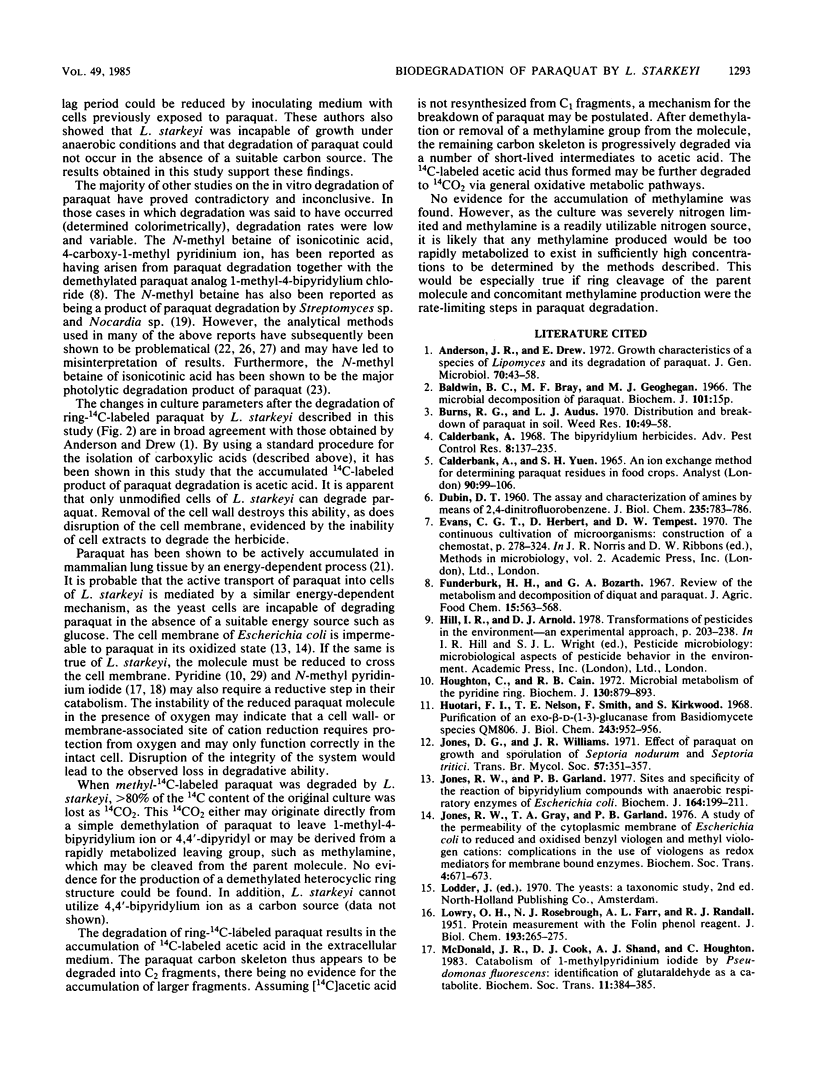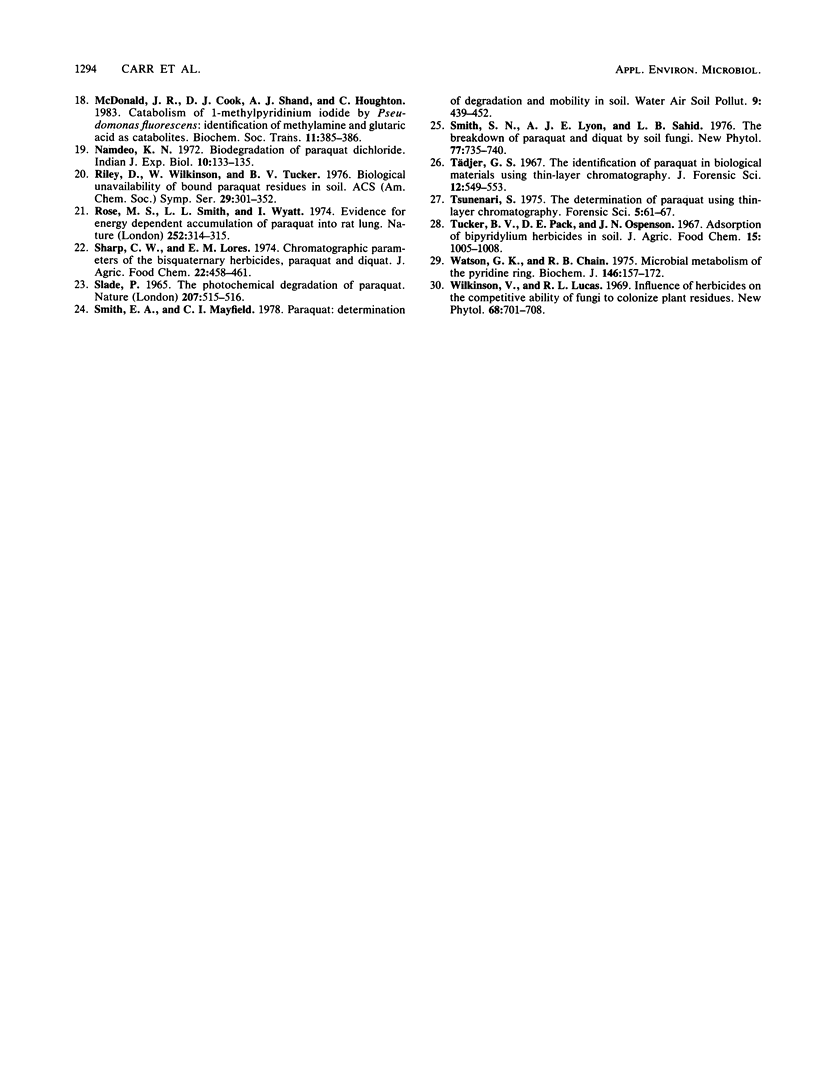Abstract
The biodegradation of ring-14C- and methyl-14C-labeled paraquat by the soil yeast Lipomyces starkeyi was studied in vitro. It was found that the degradation of paraquat (acting as a sole source of culture nitrogen) resulted in the accumulation in the extracellular medium of radiolabeled acetic acid. The culture also evolved radiolabeled CO2. The results suggest that the degradation of paraquat by L. starkeyi is associated with the integrity of the cell wall and that disruption or removal of the wall results in a complete loss of degradative capability. A mechanism for the degradation of paraquat by this organism is postulated.
Full text
PDF




Selected References
These references are in PubMed. This may not be the complete list of references from this article.
- Calderbank A. The bipyridylium herbicides. Adv Pest Control Res. 1968;8:127–235. [PubMed] [Google Scholar]
- DUBIN D. T. The assay and characterization of amines by 2,4-dinitrofluorobenzene. J Biol Chem. 1960 Mar;235:783–786. [PubMed] [Google Scholar]
- Houghton C., Cain R. B. Microbial metabolism of the pyridine ring. Formation of pyridinediols (dihydroxypyridines) as intermediates in the degradation of pyridine compounds by micro-organisms. Biochem J. 1972 Dec;130(3):879–893. doi: 10.1042/bj1300879. [DOI] [PMC free article] [PubMed] [Google Scholar]
- Huotari F. I., Nelson T. E., Smith F., Kirkwood S. Purification of an exo-beta-D-(1 bonded to 3)-glucanase from Basidiomycete species QM 806. J Biol Chem. 1968 Mar 10;243(5):952–956. [PubMed] [Google Scholar]
- Jones R. W., Garland P. B. Sites and specificity of the reaction of bipyridylium compounds with anaerobic respiratory enzymes of Escherichia coli. Effects of permeability barriers imposed by the cytoplasmic membrane. Biochem J. 1977 Apr 15;164(1):199–211. doi: 10.1042/bj1640199. [DOI] [PMC free article] [PubMed] [Google Scholar]
- Jones R. W., Gray T. A., Garland P. B. A study of the permeability of the cytoplasmic membrane of Escherichia coli to reduced and oxidized benzyl viologen and methyl viologen cations: complications in the use of viologens as redox mediators for membrane-bound enzymes. Biochem Soc Trans. 1976;4(4):671–673. doi: 10.1042/bst0040671. [DOI] [PubMed] [Google Scholar]
- LOWRY O. H., ROSEBROUGH N. J., FARR A. L., RANDALL R. J. Protein measurement with the Folin phenol reagent. J Biol Chem. 1951 Nov;193(1):265–275. [PubMed] [Google Scholar]
- Namdeo K. N. Biodegradation of paraquat dichloride. Indian J Exp Biol. 1972 Mar;10(2):133–135. [PubMed] [Google Scholar]
- Rose M. S., Smith L. L., Wyatt I. Evidence for energy-dependent accumulation of paraquat into rat lung. Nature. 1974 Nov 22;252(5481):314–315. doi: 10.1038/252314b0. [DOI] [PubMed] [Google Scholar]
- Sharp C. W., Lores E. M., Jr Chromatographic parameters of the bisquaternary herbicides, paraquat and diquat. J Agric Food Chem. 1974 May-Jun;22(3):458–461. doi: 10.1021/jf60193a029. [DOI] [PubMed] [Google Scholar]
- Tsunenari S. The determination of paraquat using thin-layer chromatography. Forensic Sci. 1975 Feb;5(1):61–67. doi: 10.1016/0300-9432(75)90088-6. [DOI] [PubMed] [Google Scholar]
- Watson G. K., Cain R. B. Microbial metabolism of the pyridine ring. Metabolic pathways of pyridine biodegradation by soil bacteria. Biochem J. 1975 Jan;146(1):157–172. doi: 10.1042/bj1460157. [DOI] [PMC free article] [PubMed] [Google Scholar]


